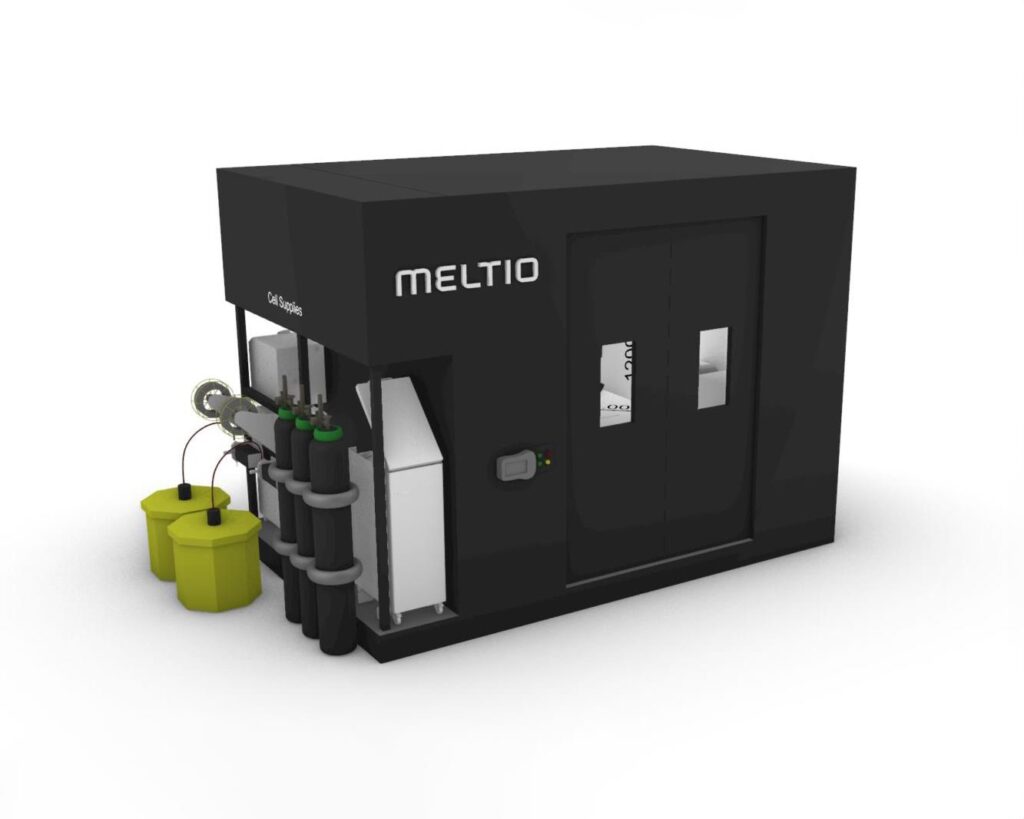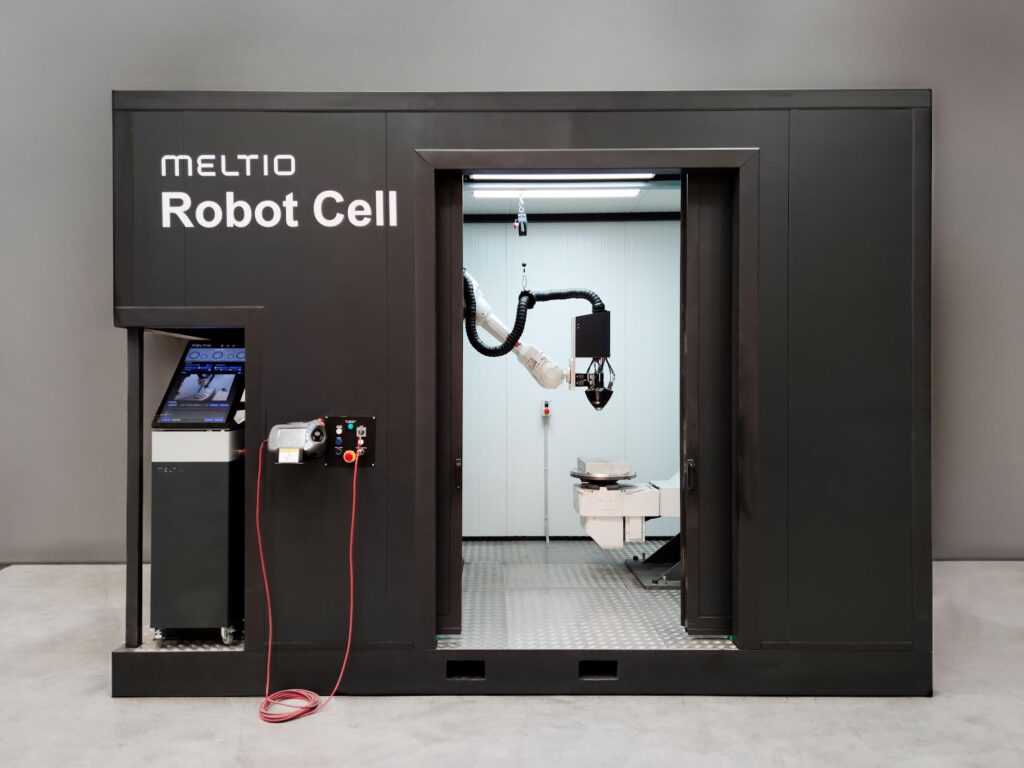Meltio, the Spanish original equipment manufacturer (OEM) of directed energy deposition (DED) metal additive manufacturing (AM) platforms, announced the launch of the company’s latest product offering, the Meltio Robot Cell. Combining the Meltio Engine DED head with an ABB robotic arm (as the standard model), the Robot Cell is designed for use in controlled industrial environments, i.e., it is not meant for forward deployment.
The Meltio Robot Cell is a plug and play system, which should give the platform a leg-up in appealing to new customers. Meltio recently announced that the company has started selling its products in India, with its first official sales partner being IRTI Robotics, headquartered in Pune.
In my post about that announcement, I pointed out the significance of Pune to Indian manufacturing, and in particular, the auto sector in India. The existing prevalence of robotic arms for auto manufacturing applications may make for an easier transition for workers learning about AM for the first time, by comparison with other AM technologies.

In a press release about the launch of the Meltio Robot Cell, the product manager for the Meltio Engine, Alejandro Nieto, said, “Meltio’s main commitment with the launch of Meltio Robot Cell is to offer all types of industries the ability to manage the entire manufacturing process using our metal 3D printing technology consisting of a Meltio head integrated in a robotic arm and a safe environment, in order to just produce parts. …Meltio Robot Cell also provides the industrial customer with a working protocol. Relative to existing offerings in the market today, the Meltio Robot Cell is very competitively priced and its price is below 300,000 dollars. The cost of the solution is also competitive when compared with thermoplastic and concrete 3D printing systems as seen in other sectors that demand 3D printing for structural parts. This cell has the possibility to be delivered with other robot brands on the market to be more responsive to customers in terms of availability and technical capability.”

Although, as I mentioned above, the Meltio Robot Cell is not meant for forward deployment, Meltio has permanently installed a version of its technology on a US Navy vessel, the USS Bataan. The system integrated into the USS Bataan utilizes a Meltio hybrid system that is integrated into a CNC, rather than the Meltio Robot Cell, which relies on an ABB robotic arm.
Additionally, the company that developed the core technology for the Meltio Engine, the Florida-based OEM ADDiTEC, came out with a robotic cell for forward deployment in the spring of 2023, around 6 months after releasing a robotic cell for industrial environments. Thus, it is logical to expect that Meltio may also be working on a platform for forward deployment.
This also raises the question of why ADDiTEC and Meltio operate as separate companies (Meltio started as a joint venture between ADDiTEC and Spanish company Sicnova). There may be no answer to this other than that it simply reflects how the AM sector has unfolded over the last several years. That is, there are more growth opportunities available for metal AM companies in the US than there were in 2019, when Meltio launched: whereas, as recently as five years ago, it may not have seemed viable to ADDiTEC to operate as a robotic arm 3D printing OEM in the US, now it apparently does.
There are also potential alternative explanations, however, for instance, that it was a deliberate long-term divide and conquer strategy, meaning the companies could have left the door open to merge at some point in the future. That may seem unnecessarily convoluted, but the underlying technology is apparently of high priority to the US military, which would make the convolution potentially necessary. The technology driving the first metal 3D printer to be permanently installed on a US Navy vessel is presumably viewed by the US government as vital to national security, and it hasn’t been easy to keep American manufacturing IP in the US! American deep tech startups go bankrupt all the time and lose valuable IP to China. Again, I’m not saying this is what happened, but if one was concerned that metal DED heads designed for attachment to robotic arms might be difficult to keep inside the US domestic economy because of lack of demand, ensuring that the technology was also developing simultaneously in a NATO member like Spain would in that case seem like a reasonable risk-reduction plan.
Subscribe to Our Email Newsletter
Stay up-to-date on all the latest news from the 3D printing industry and receive information and offers from third party vendors.
Print Services
Upload your 3D Models and get them printed quickly and efficiently.
You May Also Like
Consolidation in AM: How 2025 Is Shaping the Industry’s New Normal
The first half of 2025 has been marked by a clear shift in the additive manufacturing (AM) industry. Companies are no longer just focused on developing new tech by themselves....
Etsy Design Rule Change Reduces Selection of 3D Printed Goods
Online marketplace Etsy has implemented a rule change requiring all 3D printed goods on the site to be original designs. The update to the site’s Creativity Standards states, ¨Items produced using...
U.S. Congress Calls Out 3D Printing in Proposal for Commercial Reserve Manufacturing Network
Last week, the U.S. House of Representatives’ Appropriations Committee moved the FY 2026 defense bill forward to the House floor. Included in the legislation is a $131 million proposal for...
Transforming From Tourist to Native: Duro CEO Michael Corr Explains Why the Company Rebuilt its PLM Software on AI
In these early innings of the AI boom, many market analysts have expressed concern that AI spend has gotten too far ahead of the technology’s proven ability to deliver significant...
































